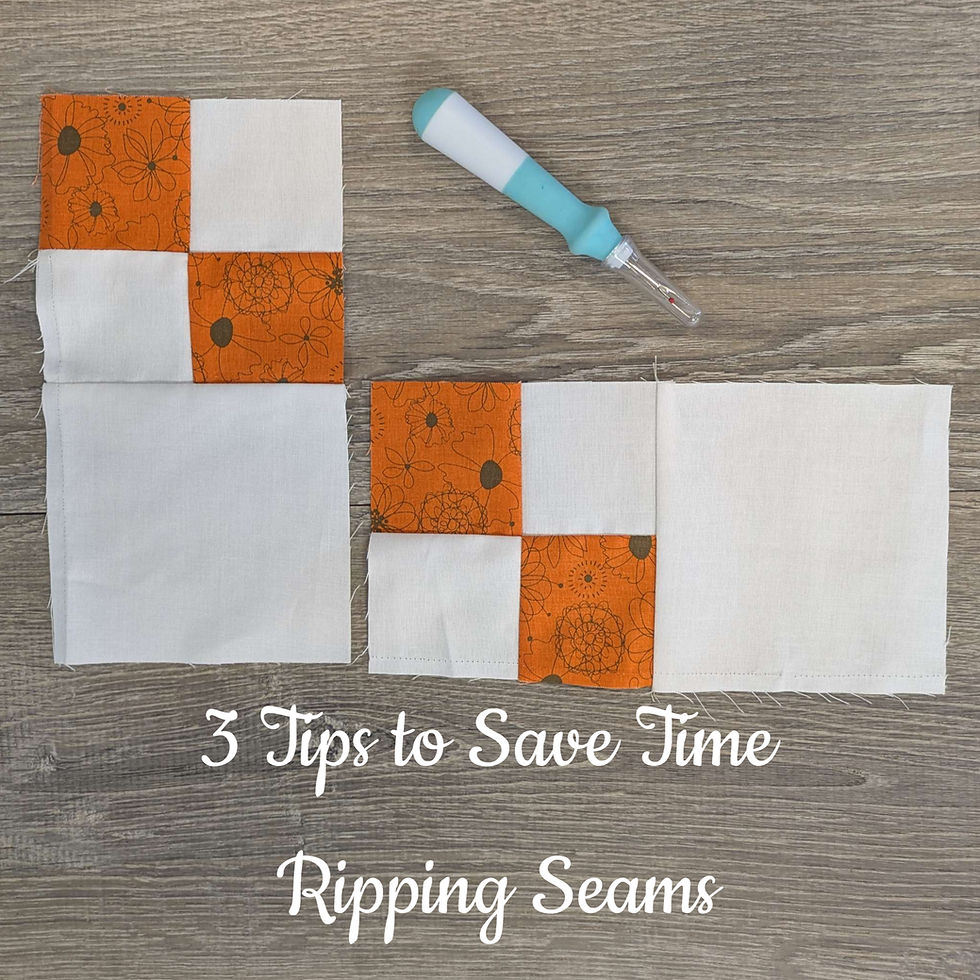Quilting Motif 1 - Grids
- Tara Wright
- Jan 24, 2022
- 4 min read
Updated: Feb 13, 2022
Hi friends! Today we are going to learn some methods for quilting grids like the CROSSHATCH and CRISS-CROSS quilting designs.

These are straight-line quilting designs with different orientations:
CROSSHATCH is generally used to describe a grid design on point (diagonal), and CRISS-CROSS is a regular grid with lines that run vertically and horizontally (like a tic-tac-toe).

Since the Nothing but Love Quilt-Along is designed as a quilt-as-you-go project, I am excited to share some quilting design ideas, tips, and tutorials with you! If you are new to quilting, I wrote an intro post that you can read to get your blocks set up and machine ready, just click on the link below:
I am starting with the crosshatch and criss-cross motifs for several reasons:
easy straight-line quilting
fairly quick to accomplish
doesn't need many tools or equipment add-ons
looks good on any block
can be used as an all-over design (on every block).
Now traditionally I would say most quilters want these grids to be evenly spaced and as close to precisely perpendicular as possible. But I am here to tell you there is much fun to be had with these designs and they don't have to be perfect to look great!
Here are a few examples of crosshatch (diagonal) and criss-cross (regular grid) quilting with precisely measured equidistant lines, changing increment lines, and unevenly spaced lines. Once you become a confident quilter you can even mix and match motifs in different sections of your quilt or different parts of your blocks for great texture!
Map out your grid
To begin using this design I want you to be comfortable and happy with the result, so you will probably want to mark the lines out on your block. You will need your quilting ruler and a marking tool. Options include chalk markers/pencils, water-soluble markers, frixion pens, or a hera marker. You can also use your seam lines as your guide, painter's tape, markings on your machine foot, or special sewing foot guide bar attachments.
I like to sandwich my blocks as soon as they are made with my pre-cut backing and batting squares so that my seams all stay nicely pressed. So get your block (or a practice quilt sandwich) and let's mark your gridlines.
Decide on your increment. I did a 2 inch spacing on my original Nothing but Love quilt and it worked out very nicely. (On the yellow block I used 3/4 inch.)
When doing an equidistant grid, I start by marking the center lines first. (Either corner to corner or down the center.)
Then I draw parallel lines in both directions until I am out of space in the quilting area.
Then I repeat for the opposite direction.
**TIP: Typically with CROSSHATCH, you can check the "squareness" of your block when marking the lines as you will consistently run from corner to corner on the different patches. If you notice issues this is the time you can try to fix them.

Often when I am doing CRISS-CROSS I prefer to use my seam lines as my guide. I use increment lines on my dual-feed foot to do the spacing instead of marking. This usually leads me to create a less equidistant more modern quilting design.

***TIP: Seams that are pressed open, should not be quilted "in the ditch" because there isn't really fabric there. It will support your quilt better to stitch 1/4 inch away from the seam in either or both directions.
If you are a bold novice or more experienced quilter you may try using differing increments to make your grid or quilting the grids in different patches (or elements) of your block. The block below has straight line through the bar sections that create criss-cross quilting in the corners and then I did crosshatch in the heart.

Once you have decided on your design orientation and made your marks, it's time to sew!
Let's get stitching!
This design works best using your walking foot or dual-feed foot. So change your foot over and then I like to lengthen my stitch for quilting, so I change my machine to read 3.0-4.0 for length (this is approximately 8-10 stitches/inch).
You should start your quilting on the marked center lines to anchor your block and reduce weird wrinkles and puckers in your quilt. Stitch directly on your markings as straight as you can.
Start slightly off the block with your needle down,
Stitch slowly to keep from wavering and let your feed dogs help guide your fabric right down the line. Don't stress if you get off - little wobbles will not be noticeable on your overall quilt.
Stitch right off the block and cut your thread. You do not need to anchor the ends because you will be sewing over them when you put your block together.
If you start quilting in the middle of the block, you need to anchor your starts and stops with a knot or a few reverse stitches.
Repeat on the opposite center line to keep your block square. Then you can stitch all of your lines in one direction moving outward from the center. Repeat on the other side of the center line, and then do the same for the other direction until your entire block is quilted. Easy peasy right?!
I hope you had fun and don't forget to share your progress and quilt pictures here or on social media with any of these tags #nothingbutloveqal #quiltinggrids
See you next week with Block #2 - Refuge!
Be blessed,
Tara






















I am new to all this quilting "stuff", and I believe my machine may be considered an antique...however, I'm not ready to be classified as one "yet"...! So I decided to attempt this Quilt Along- especially since it's all about Love! I suffered with alittle Spring Fever, so I am behind schedule in my endeavors. However, I find Tara's instructions and tips to be not only quite encouraging, but gentle and kind as well- just what I've needed!! I have completed my first 2 blocks and am currently practicing my "squiggles" for the Joyful block. While I can't claim to be joyful yet; I'm getting there! I hope you're having as much fun on this learning Adventure as I am...in the meant…